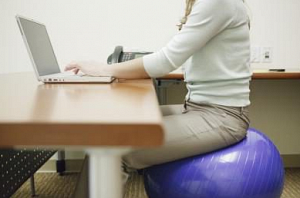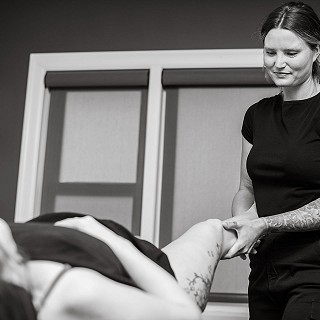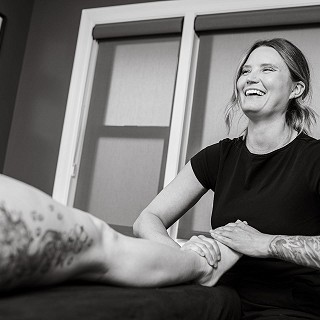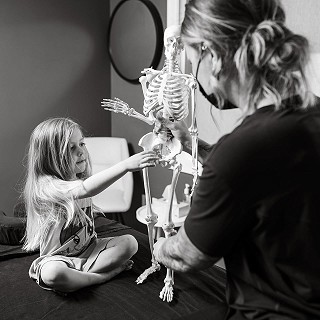Clean Eating
The soul of eating clean is consuming food the way nature delivered it, or as close to it as possible. It is not a diet; it’s a lifestyle approach to food and its preparation, leading to an improved life – one meal at a time.
Eat five to six times a day
Three meals and two to three small snacks. Include a lean protein, plenty of fresh fruit and vegetables, and a complex carbohydrate with each meal. The steady intake of clean food keeps your body energized and burning calories efficiently all day long.
Choose organic clean foods whenever possible
If your budget limits you, make meat, eggs, dairy and the Dirty Dozen your organic priorities.
Drink at least two liters of water a day
Preferably from a reusable canteen, not plastic; we’re friends of the environment here! Limit your alcohol intake to one glass of antioxidant-rich red wine a day.
Get label savvy
Clean foods contain just one or two ingredients. Any product with a long ingredient list is human-made and not considered part of a clean diet.
Avoid processed and refined foods
This includes white flour, sugar, bread and pasta. Enjoy complex carbs such as whole grains instead. Avoid these clean eating foes.
Know thy enemies
Steer clear of anything high in trans fats, anything fried or anything high in sugar. Avoid preservatives, color additives and toxic binders, stabilizers, emulsifiers and fat replacers.
Consume healthy fats
Aim to have essential fatty acids, or EFAs, incorporated into your clean diet every day.
Learn about portion sizes
Work towards eating within them. When eating clean, diet is as much about quantity as it is quality.
Reduce your carbon footprint
Eat produce that is seasonal and local. It is less taxing on your wallet and our environment.
Shop with a conscience
Consume humanely raised local meats and ocean-friendly seafood.
Practice mindful eating
Never rush through a meal. Food tastes best when savored. Enjoy every bite!
Take it to go
Pack a cooler for work or outings so you always have clean food on the go.
Make it a family affair
Food is a social glue that should be shared with loved ones. Improve the quality of your family’s life along with your own by eating clean as a team.
Heart Pancakes

Ingredients
- 1 cup all-purpose flour
- 2 tablespoons sugar
- 2 teaspoons baking powder
- 1/2 teaspoon salt
- 1 large egg, lightly beaten
- 1 cup milk
- 2 tablespoons unsalted butter, melted and cooled slightly, plus 1 tablespoon for griddle
Instructions
- Preheat griddle to 375 degrees, or heat griddle pan over medium-high heat. Whisk flour, sugar, baking powder, and salt in medium bowl. Add egg, milk, and 2 tablespoons melted butter; whisk to combine. Batter should have small to medium lumps.
- Preheat oven to 175 degrees. Test griddle by sprinkling with a few drops of water. If water bounces and spatters, it is hot enough. With paper towel, brush 1/2 teaspoon butter onto griddle. Wipe off excess.
- Fill a pastry bag fitted with a 1/4-inch plain round tip with batter; twist end of bag, and secure with rubber band. Working in batches, pipe heart shapes, drawing V of batter in center of hearts to fill, on heated griddle. When pancakes have bubbles on top and are slightly dry around the edges, about 2 minutes, flip over. Cook until golden on the bottom, about 1 minute.
- Repeat with remaining batter, using 1/2 teaspoon butter on griddle for each batch, keeping finished pancakes on a heat-proof plate in the oven until ready to serve.
Serves: 3-4 people
The Best 8 Stretching Exercises To Do At Your Desk

1. Just stand up and sit down — no hands You might have gotten a gold star in preschool for sitting still, but it just goes to show you (best sellers notwithstanding) that not all of us learned everything we need to know in kindergarten. “If you stand up and sit down (over and over) — without using your hands — it can be a challenge,” says Smith. “Do it while you’re on the phone; no one will know.”
2. Substitute exercise for sitting — while you work Get rid of your desk chair and substitute an exercise ball, suggests Smith. “I used it for a while when I was having low-back problems; it was great,” Smith says. “All day you are engaging all the muscles in the back, legs, butt, everything, to stay balanced.” Hame knows one man who put a treadmill in his office and conducted all his business while walking. (He lost weight, too, Hame says.)
3. Shrug your shoulders — to release the neck and shoulders Inhale deeply and shrug your shoulders, lifting them high up to your ears. Hold. Release and drop. Repeat three times. Shake your head slowly, yes and no. You might as well amuse yourself while you do it to relax even further. Ask yourself silly questions: “Is your boss an idiot?” Move your head up and down, “Yes, yes, yes.” Side to side: “No. No. No.” (Shedding tension is as much mental as physical.)
4. Release the upper body with a torso twist Inhale and as you exhale, turn to the right and grab the back of your chair with your right hand, and grab the arm of the chair with your left. With eyes level, use your grasp on the chair to help twist your torso around as far to the back of the room as possible. Hold the twist and let your eyes continue the stretch — see how far around the room you can peer. Slowly come back to facing forward. Repeat on the other side.
5. Do leg extensions — work the abs and legs Grab the seat of your chair to brace yourself and extend your legs straight out in front of you so they are parallel to the floor. Flex and point your toes five times. Release. Repeat.
6. Stretch your back with a “big hug” Hug your body, placing the right hand on your left shoulder and the left hand on your right shoulder. Breathe in and out, releasing the area between your shoulder blades.
7. Stretch your back and shoulders with a “leg hug” Sit on the edge of your chair (if it has wheels, wedge the chair against the desk or wall to make sure it does not roll). Put your feet together, flat on the floor. Lean over, chest to knees, letting your arms dangle loosely to the floor. Release your neck. Now bring your hands behind your legs, right hand grasping left wrist, forearm (or elbow if you can reach that far), left hand grasping the right. Feel the stretch in your back, shoulders and neck. Hold. Release your hands to the floor again. Repeat three times or as often as it feels good.
8. Substitute walks for email — and don’t eat at your desk Instead of emailing a colleague “and copying 25 people who don’t want to be copied anyway,” Smith says, “walk over to the colleague you really want to talk to.”





